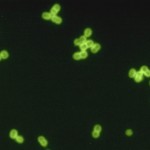Serious pneumococcal infections – pneumonia, bacteremia, meningitis – are responsible for up to 11 percent of child deaths on the planet. Vaccines exist, such as Prevnar, but they have two big shortcomings.
First, they’re designed to help people build antibodies against specific strains of pneumococcus. But new strains keep emerging, and most of those circulating in the developing world aren’t covered.
Second, they’re too expensive for most developing countries.
Six years ago, Richard Malley, of the Division of Infectious Diseases at Children’s Hospital Boston, and Marc Lipsitch of the Harvard School of Public Health, showed that there is another defense against pneumococcus that doesn’t care what strain it’s encountering. And, despite what textbooks were saying, it has nothing to do with antibodies. Malley and Lipsitch studied unvaccinated toddlers in the U.S., Israel, and Finland. Between 1 and 2 years of age, the toddlers’ concentrations of anti-pneumococcal antibodies rose only slightly – yet their incidence of invasive pneumococcal disease fell sharply. Moreover, when they exposed mice to pneumococcus, the animals developed immunity, even when they were genetically unable to make antibodies.
A more recent study find the source of this protection — the body’s own TH17 cells, which act like bouncers, preventing pneumococcus from getting a foothold in the upper respiratory tract. Could this be exploited for a vaccine? In their latest work, Malley and collaborators at Genocea Biosciences and the international nonprofit organization PATH screened a comprehensive library of pneumococcal proteins, finding those that stimulated TH17 cells in protected mice. When mice were immunized with these proteins, they showed near-complete protection from pneumococcal colonization. The same proteins also potently stimulated human TH17 cells from adult volunteers.
Malley, his Genocea colleagues and PATH will refine and test the most promising vaccine formulation in animals. If it proves effective and safe, they will submit an Investigational New Drug application to begin human trials. They believe this vaccine would be considerably less expensive to manufacture than existing products.
Malley also has funding for other approaches, including a whole-cell vaccine that provides potent protection against pneumococcus. This vaccine is being developed in concert with PATH and the Brazilian manufacturer Instituto Butantan. Plans are being made to apply to the Food and Drug Administration for clinical testing later this year. “If the results we show in mice can be replicated in humans,” says Malley, “this vaccine could provide protection for children in the poorest areas in the world, which has been our main focus over the past decade.”
Malley’s group is also studying non-needle modes of delivery. One possibility is a skin patch placed on infants’ backs for several hours. Since no needles would be involved, there would be no need for sterile procedures or medical professionals to administer it.
Malley discusses pneumococcal infection, the challenges of developing useful vaccines, and vaccine approaches his group is testing in this video.
“We estimate that, every minute, 7 children die from a pneumococcal infection worldwide, “ says Malley. “Now is the time to act.”









